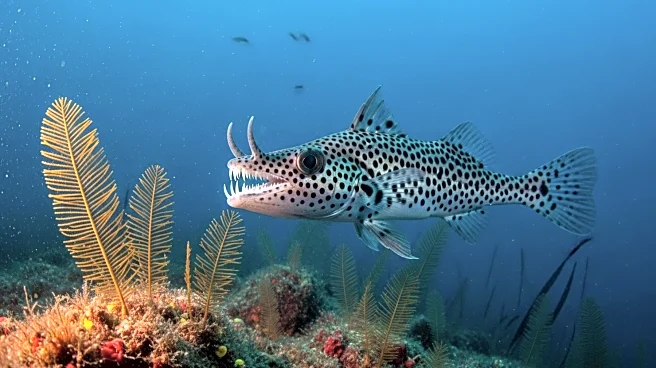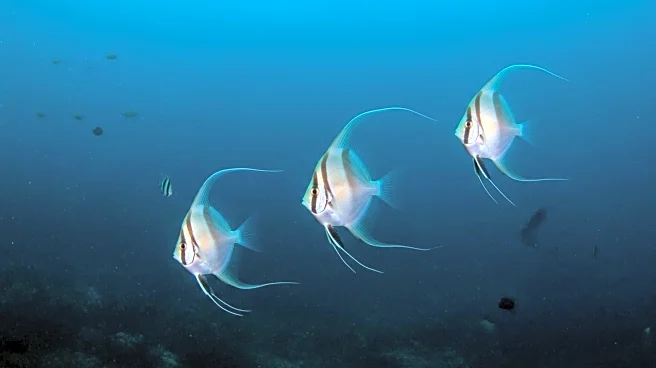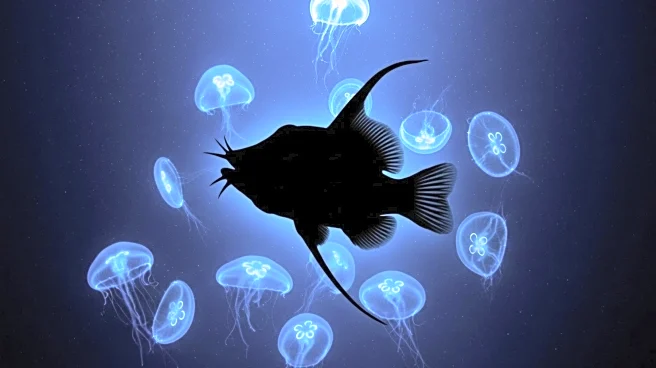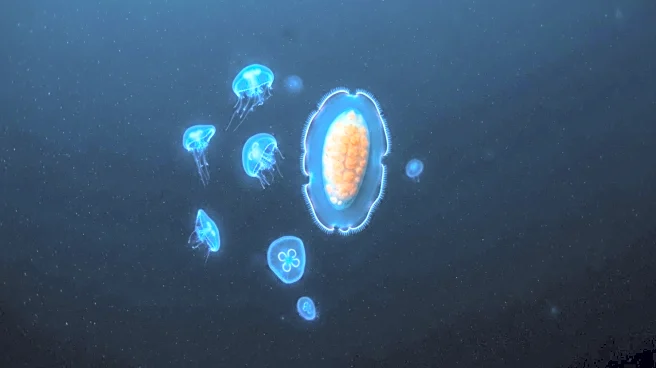What's Happening?
Researchers have discovered that the spotted ratfish, a deep-sea fish native to the northeastern Pacific Ocean, uses real teeth located on its forehead for mating purposes. These teeth are part of an appendage called the tenaculum, which is used by male ratfish to hold onto females during mating. The tenaculum is covered in retractable and flexible teeth, which are rooted in the dental lamina, a jaw tissue typically not found outside the jaw. This finding challenges the long-standing assumption in evolutionary biology that teeth are strictly oral structures. The study, published in the journal PNAS, involved examining hundreds of fish and comparing them to ancestral fossils, revealing that both male and female ratfish develop the start of a tenaculum, but only males grow it into a toothed structure.
Why It's Important?
The discovery of teeth outside the jaw in the spotted ratfish could have significant implications for understanding the evolutionary history of teeth. It suggests that teeth may develop in other unexpected locations in vertebrates, potentially leading to new insights into the evolution of dental structures. This research could pave the way for further studies on the development and function of teeth in other species, offering a rare glimpse into the past and the evolutionary adaptations of marine life. The findings also highlight the complexity and diversity of reproductive strategies in the animal kingdom, which could inform conservation efforts and the study of marine biodiversity.











